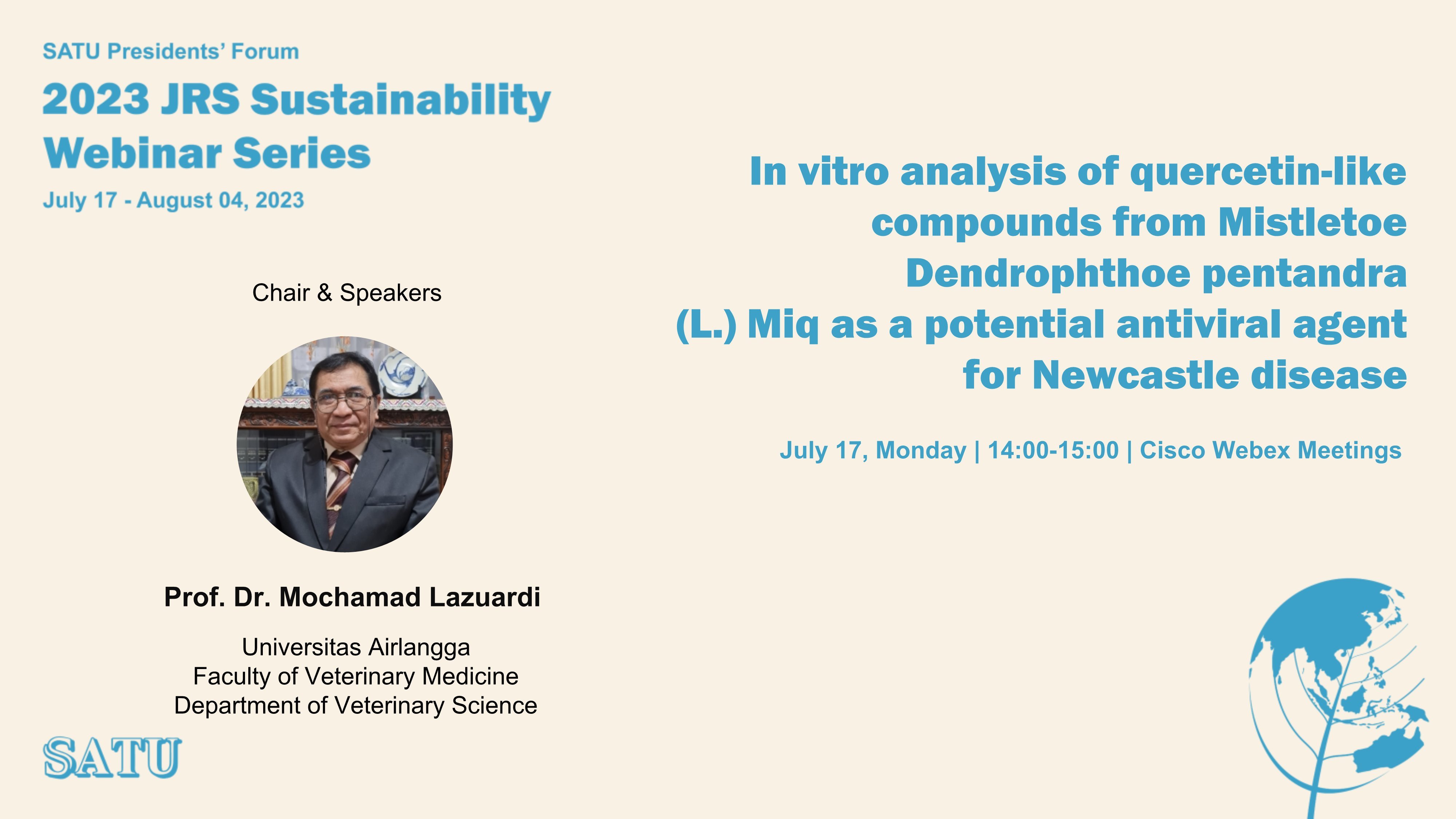2023 JRS Webinar (1) | In vitro analysis of quercetin-like compounds from Mistletoe Dendrophthoe pentandra (L.) Miq as a potential antiviral agent for Newcastle disease

2023 JRS Sustainability Webinar Series (1)
In vitro analysis of quercetin-like compounds from Mistletoe Dendrophthoe pentandra (L.) Miq as a potential antiviral agent for Newcastle disease
Date: 17 July 2023 (Monday)
Time: 14:00 - 15:00 (GMT+8 Taiwan)
Language: English
Way of Participation: Cisco Webex Meetings
Registration: HERE
Other JRS Webinars: HERE
u Chair & Speakers u
Prof. Dr. Mochamad Lazuardi
Faculty of Veterinary Medicine, Universitas Airlangga
u About the Webinar u
Background: Recent evidence suggests that some flavonoid compounds obtained from crude methanol extract of mistletoe leaves (Dendrophthoe pentandra L. Miq), also known as Benalu Duku (BD), have antimicrobial effects. Thus, the plant has potential to eliminate viruses that may cause outbreaks in chicken farms. This study aimed to prove the in vitro ability of flavonoid compounds, namely quercetin-like compounds (QLCs), to eliminate field viruses, specifically the Newcastle disease virus (NDV).
Methods: This research was performed in two stages. An in vitro test was used with a post-test of the control groups designed at a significance of 0.05. BD leaves (5 kg) were extracted using a maceration method with methanol and then separated into hexane, chloroform, ethyl acetate, and methanol fractions. The final extracted products were separated using semi-preparative high-performance liquid chromatography (HPLC) to obtain QLCs. The QLCs were identified and compared with quercetin using HPLC, proton and carbon nuclear magnetic resonance spectrometry, Fourier transform infrared spectrophotometry, and ultra-performance liquid chromatography–mass spectrometry. The activity of QLCs was tested in vitro against the NDV at a virulency titer of 10−5 TCID50 and in chicken kidney cell culture.
Results: Solutions of 0.05% (w/v) QLCs were discovered to have antiviral activity against NDVs, with an average cytopathogenic effect antigenicity at a 10−5 dilution (p<0.05).
Conclusions: QLCs from flavonoids from the leaves of BD have antiviral bioactivity against NDVs and may have the potential to be developed as medicinal compounds for the treatment of other human or animal viral infections.
Keywords: Antiviral agents, Benalu Duku, Health life, Herbal medicine, Inactivant.
Enquiries
SATU Presidents’ Forum International Secretariat
satu@ncku.edu.tw | 886-6-2099250 | 886-6-2757575 #50962
https://satu.ncku.edu.tw/